What's New
Displaying results 3431 - 3440 of 4052
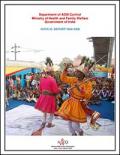
Resource | Publications,
India had an estimated 1.8 – 2.9 million HIV positive persons in 2007, with an estimated adult HIV prevalence of 0.34% (0.25%–0.43%). As the HIV Prevalence among the high risk groups (HRG) is very high compared to that among the general population, India continues to be in the category of concentrated epidemic. The sexual mode continues to be the major mode of transmission, though transmission through injecting drug use and Men having Sex with Men are on the rise in many new pockets. The annual HIV sentinel surveillance covered 1,215 sites in 2008-09.
The National AIDS Control Programme (NACP) Phase-III (2007-2012) has the overall goal of halting and reversing the epidemic in India over the five-year period. It places the highest priority on preventive efforts while, at the same time, seeking to integrate prevention with care, support and treatment.
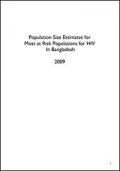
Resource | Publications,
This report provides the results of the 2009 in-country process of updating Population Size Estimates for MARPs. The exercise has been undertaken at this juncture, not only because the previous estimates are already five years old, but because of newly available data that allows the country to improve upon previous estimates. A large-scale mapping exercise, known as the Rapid Situation and Response Assessment (RSRA) provided a major impetus for updating the 2004 estimates for IDUs and FSWs in particular.
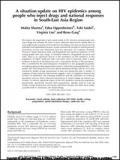
Resource | Publications,
We explore the magnitude of and current trends in HIV infection among people who inject drugs and estimate the reach of harm reduction interventions among them in seven high-burden countries of the South-East Asia Region. Our data are drawn from the published and unpublished literature, routine national HIV serological and behavioural surveillance surveys and information from key informants. A mapping of harm reduction interventions suggests a lack of congruence between the location of established and emerging epidemics and the availability of scaled-up prevention services. Harm reduction interventions in closed settings are almost nonexistent. To achieve significant impact on the HIV epidemics among this population, governments, specifically national AIDS programmes, urgently need to scale up needle–syringe programmes and opioid substitution therapy and make these widely available both in community and closed settings.

Resource | Presentations,
The drug of choice in Malaysia is opiate-based drugs (heroine and morphine) and marijuana. In the past decade, annually more than 35,000 drug addicts are identified in the country which has reduced significantly, and in 2008--to about 25, 000 cases. From 1988 – 2008, there are 285,762 addicts that are registered with National Anti-Drugs Information System (NADI). The advent of synthetic drugs (ATS) is a present challenge to Malaysia.

Resource | Presentations,
The Integrated HIV Behavioral and Serologic Surveillance (IHBSS) National Dissemination Forum was held on December 11, 2009 at the Heritage Hotel, Manila.
The presentation provided data on STI trends, HIV cases, modes of HIV transmission in the Philippines.
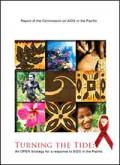
Resource | Publications,
The Pacific is a unique and vulnerable region. It spans a third of the world’s surface and accounts for just 0.14% of the world’s population—with a similar proportion of the global burden of HIV. For Pacific countries, even a small number of people living with HIV can translate into high incidence and prevalence rates that can have devastating impacts on individuals, families, communities and economies. These challenges demand greater global attention. Pacific countries are often included in broad Asia–Pacific regional groupings where the magnitude of the problem in Asian countries overshadows the challenges and needs of smaller Pacific countries.
Even the more-developed countries of the region are not immune to significant challenges to human development, compounded in recent times by the global financial crisis. These Pacific realities led to the constitution of the Commission on AIDS in the Pacific in October 2007 to examine the current scale of the HIV epidemic in the region. The Commission also examined how the Pacific’s response has changed over the past decade and how this momentum can be strengthened.
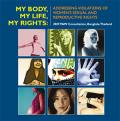
Resource | Publications,
The Asia Pacific Forum on Women, Law and Development (APWLD) has been facilitating consultations with the United Nations Special Rapporteur on Violence against Women, its causes and consequences (UNSRVAW) since 1995, following the inception of the UNSRVAW mandate and appointment of the first Rapporteur in 1994.
The theme of the 2009 consultation was 'Violations of Women's Sexual and Reproductive Rights'. Fifty four women, and one man, from twenty one countries in Asia Pacific came together to affirm women’s sexual and reproductive rights as fundamental human rights. In doing so they claimed women's autonomy to make decisions on issues concerning their own bodies and sexuality.
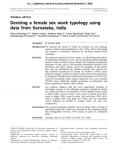
Resource | Publications,
The article examines the extent to which an existing sex work typology captures human immunodeficiency virus (HIV) risk in Karnataka and propose a systematic approach for devising evidence-based typologies.
The proposed typology identifies street to lodge FSWs as being at particularly high risk, which was obscured by the existing typology that distinguishes between FSWs based on place of solicitation alone.
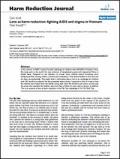
Resource | Publications,
In the summer of 2009, the author visited a humble orphanage for children with HIV/AIDS in Vietnam. Here, like many parts in the world, the very existence of marginalized people with stigmatized illness is hidden away. Relegated to the shadows of society, these children lacked something more fundamental than housing, shelter, nutrition and medications. They lacked families to love and care for them unconditionally. One might think it self-evident that a visit to an orphanage for children with HIV would be profound, but the profundity wasn't where he expected to find it. It was in how the children had created their own family, loving each other like brothers and sisters, and the way the priest who operated the shelters was more than a Father, he was a dad to dozens of children. This is an account of love as harm reduction in the Mai Tam orphanage in Ho Chi Minh City.
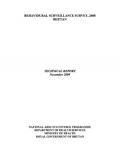
Resource | Publications,
A systematic surveillance system for HIV and risk behaviours is essential for a country to monitor its prevalence of HIV and the risks of an epidemic as well as trends over time. All available evidence in Bhutan suggests that HIV prevalence is indeed low in the country, but at the same time, risks may be high.
Based on the principles of Second Generation Surveillance, this first BSS was conducted among population groups considered to be most at risk for HIV in Bhutan.





